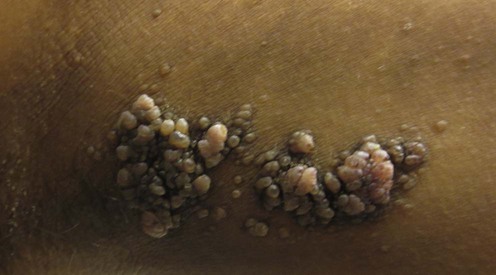Epidermal nevi

(Courtesy of Neil Fernandes, MD.)
Specific investigations
Verrucous epidermal nevi
First-line therapies
Second-line therapies
Third-line therapies
Inflammatory/dysplastic epidermal nevi
Second-line therapies
Third-line therapies

(Courtesy of Neil Fernandes, MD.)
